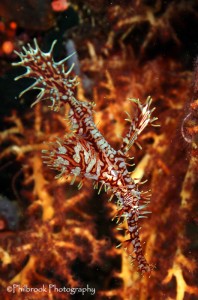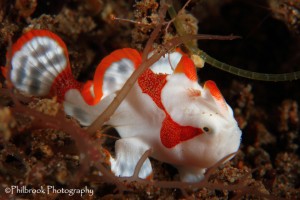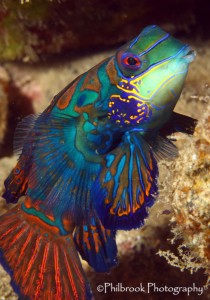Shooting Macro
 Macro photography has been the most popular style of photography for quite some time! It’s fairly easy to get great results compared to shooting wide angle for a number of reasons. The subjects are endless and they are easier to light and compose. Water conditions are not a main factor in the success of your images either. Here are some tips to get the best results out of your macro images.
Macro photography has been the most popular style of photography for quite some time! It’s fairly easy to get great results compared to shooting wide angle for a number of reasons. The subjects are endless and they are easier to light and compose. Water conditions are not a main factor in the success of your images either. Here are some tips to get the best results out of your macro images.
Lens Selection
When selecting a macro lens, it’s pretty straight forward. A 60mm macro lens is a popular choice for APS-C crop sensor cameras. They allow for extremely close focusing and are a pretty fast f/2.8 lens. The Canon 100mm and the Nikon 105mm are popular as well due to their longer focal length which allows for a greater working distance between you and your subject. These longer lenses are really beneficial for shooting exceptionally small critters. Wet mount accessory lenses or diopters (INON UCL-165M67, Nauticam SMC) can also be attached to the outside of most macro ports (via thread) and allow you to get even closer to your subject.
Since you are not shooting an entire scene, set your camera for center-weighted metering and center point (spot) focus. This will allow you the freedom to move the focus point around to a precise spot.
Manual Mode
For macro, Manual mode is the best. It allows you to take full control of your camera.
Aperture
Since you will be shooting a macro subject, you will be very close to your subject. Your “depth of field” (DOF) will be quite small compared to wide angle. Therefore you will need to use small apertures to get a decent DOF in your images.
Macro photography on a 50mm – 60mm lens typically calls for an aperture of f/16 or smaller to maintain good DOF. When shooting a 100mm lens or longer, you will likely target an f/22 or smaller aperture setting. With that said, sometimes a small DOF is desired, if so, a wider aperture should be used.
Set your shutter speed to the fastest shutter/flash sync. Settings between 1/180 – 1/320 are generally the fastest shutter sync speeds on DSLR’s. This will stop motion of a moving subject and camera shake. A faster shutter speed will also darken the background helping separate your subject from the background.
ISO 100
I generally start at ISO 100. Depending on my exposure (histogram), this may be increased up to ISO 320.
Strobes
Set your strobes to TTL! Strobes with a TTL option work great for macro photography. Shooting in TTL helps eliminate blown out highlights within the image.
For more creative lighting options, experiment with your strobe(s) at different power settings in Manual mode. INON Z-240’s and Sea & Sea YS-D1, and YS-D2 strobes are great for both TTL and Manual settings while shooting macro!
Tightly framed subjects generally make for best macro compositions. Subjects that fill the frame help eliminate distracting elements that can take away from an image. Focus on the eyes! No tail shots!






